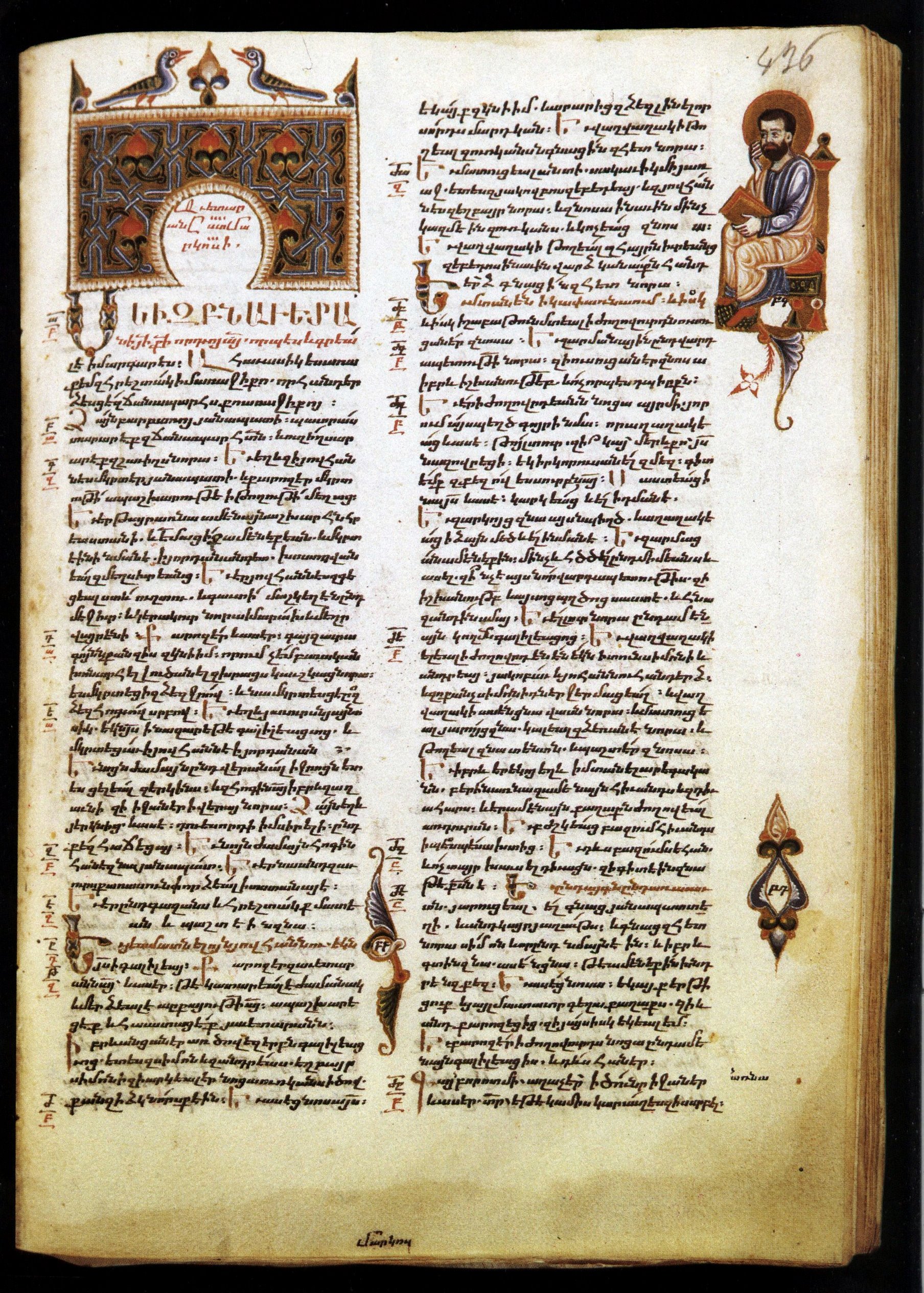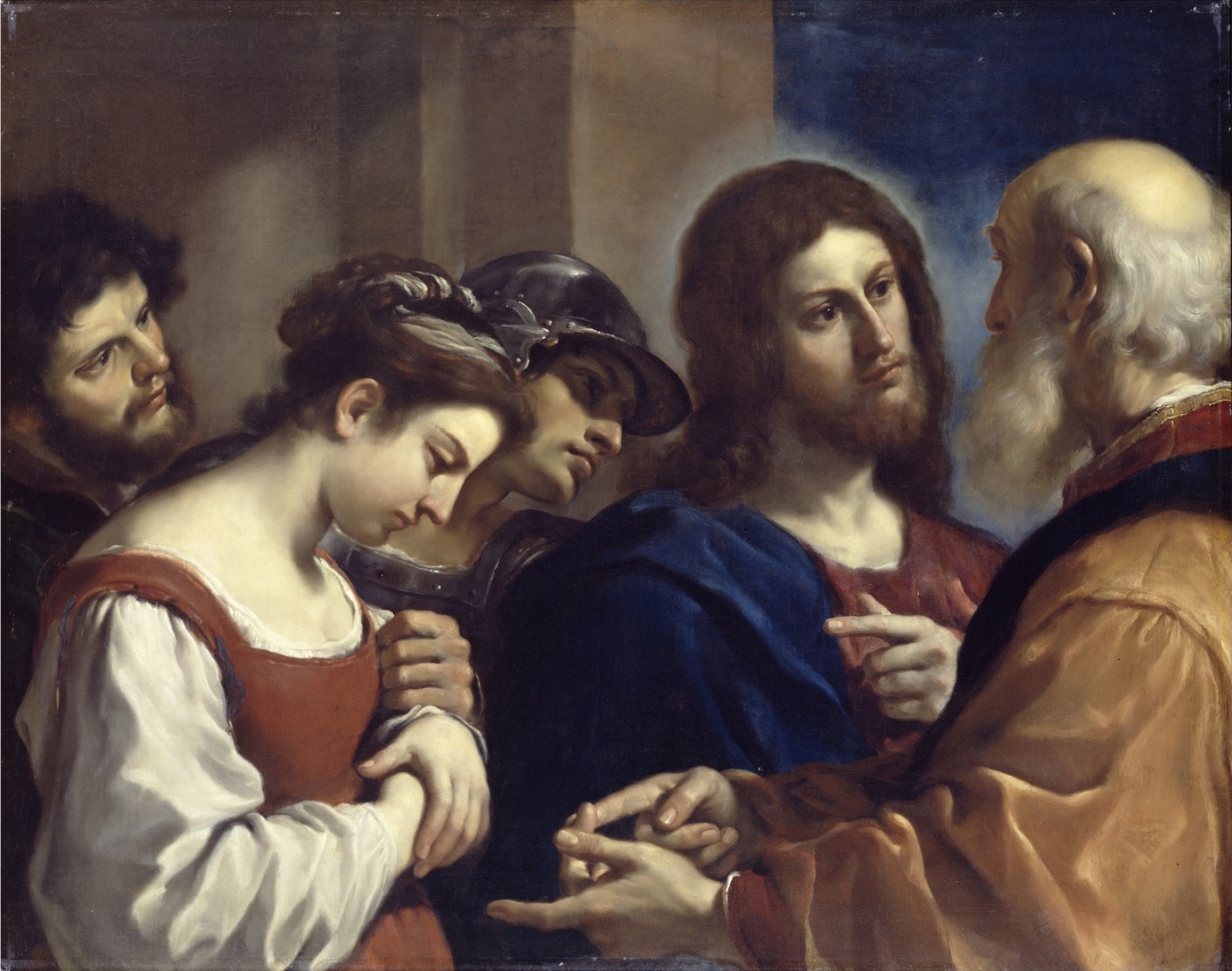|
Minuscule 829 (Gregory-Aland)
Minuscule 829 (in the Biblical manuscript#Gregory-Aland, Gregory-Aland numbering), ε220 (Biblical manuscript#Von Soden, von Soden), is a 12th-century Greek language, Greek Lower case, minuscule manuscript of the New Testament on parchment. Description The codex contains the text of the four Gospels, on 222 parchment leaves (size ). It lacks text of Gospel of Matthew, Matthew 1:1-13:28. The text is written in two columns per page, 26 lines per page. It is ornamented. The text is divided according to the (''chapters''), and according to the smaller Ammonian Sections (in Mark 236 sections, the last numbered section in 16:12). The numbers of the are given at the left margin, and their (''titles'') at the top of the pages. The numbers of the Ammonian Sections are given with a references to the Eusebian Canons (written under Ammonian Sections) at the margin. It contains liturgical books with hagiographies: Synaxarion and Menologion, the tables of the (''table of contents'') befo ... [...More Info...] [...Related Items...] OR: [Wikipedia] [Google] [Baidu] |
Gospel
Gospel originally meant the Christian message (" the gospel"), but in the 2nd century it came to be used also for the books in which the message was set out. In this sense a gospel can be defined as a loose-knit, episodic narrative of the words and deeds of Jesus, culminating in his trial and death and concluding with various reports of his post-resurrection appearances. Modern scholars are cautious of relying on the gospels uncritically, but nevertheless, they provide a good idea of the public career of Jesus, and critical study can attempt to distinguish the original ideas of Jesus from those of the later authors. The four canonical gospels were probably written between AD 66 and 110. All four were anonymous (with the modern names added in the 2nd century), almost certainly none were by eyewitnesses, and all are the end-products of long oral and written transmission. Mark was the first to be written, using a variety of sources. The authors of Matthew and Luke both indepe ... [...More Info...] [...Related Items...] OR: [Wikipedia] [Google] [Baidu] |
George Bell & Sons
George Bell & Sons was a book publishing house located in London, United Kingdom, from 1839 to 1986. History George Bell & Sons was founded by George Bell as an educational bookseller, with the intention of selling the output of London university presses; but became best known as an independent publisher of classics and children's books. One of Bell's first investments in publishing was a series of ''Railway Companions''; that is, booklets of timetables and tourist guides. Within a year Bell's publishing business had outstripped his retail business, and he elected to move from his original offices into Fleet Street. There G. Bell & Sons branched into the publication of books on art, architecture, and archaeology, in addition to the classics for which the company was already known. Bell's reputation was only improved by his association with Henry Cole. In the mid-1850s, Bell expanded again, printing the children's books of Margaret Gatty (''Parables from Nature'') an ... [...More Info...] [...Related Items...] OR: [Wikipedia] [Google] [Baidu] |
Grottaferrata
Grottaferrata () is a small town and ''comune'' in the Metropolitan City of Rome, situated on the lower slopes of the Alban Hills, south east of Rome. It has grown up around the Abbey of Santa Maria di Grottaferrata, founded in 1004. Nearby communes include Frascati, Rocca di Papa, Marino and Rome. History The history of Grottaferrata identifies largely with that of the Basilian Monastery of Santa Maria, founded here in 1004 by Saint Nilus the Younger. The founding legend narrates that, at the spot where the abbey now stands, the Virgin Mary appeared and bade him found a church in her honour. From Gregory, the powerful Count of Tusculum, father of Popes Benedict VIII and John XIX, Nilus obtained the site, which had been a Roman villa, where among the ruins there remained a low edifice of '' opus quadratum'' that had been a tomb but had been converted to a Christian oratory in the fourth century. Its iron window grates gave the site the name, first of ''Cryptaferrata'' ( ... [...More Info...] [...Related Items...] OR: [Wikipedia] [Google] [Baidu] |
Institute For New Testament Textual Research
The Institute for New Testament Textual Research (german: Institut für neutestamentliche Textforschung — INTF) at the University of Münster, Westphalia, Germany, is to research the textual history of the New Testament and to reconstruct its Greek initial text on the basis of the entire manuscript tradition, the early translations and patristic citations; furthermore the preparation of an '' Editio Critica Maior'' based on the entire tradition of the New Testament in Greek manuscripts, early versions and New Testament quotations in ancient Christian literature. Under Kurt Aland's supervision, the INTF collected almost the entire material that was needed. The manuscript count in 1950 was 4250, in 1983, 5460, and in 2017 approximately 5800 manuscripts. Moreover, INTF produces several more editions and a variety of tools for New Testament scholarship, including the concise editions known as the "Nestle–Aland" – ''Novum Testamentum Graece'' and the UBS Greek New Testament. ... [...More Info...] [...Related Items...] OR: [Wikipedia] [Google] [Baidu] |
Obelus
An obelus (plural: obeluses or obeli) is a term in typography that refers to a historical mark which has resolved to three modern meanings: * Division sign * Dagger * Commercial minus sign (limited geographical area of use) The word "obelus" comes from (obelós), the Ancient Greek word for a sharpened stick, spit, or pointed pillar. This is the same root as that of the word 'obelisk'. In mathematics, the first symbol is mainly used in Anglophone countries to represent the mathematical operation of division. In editing texts, the second symbol, also called a dagger mark , is used to indicate erroneous or dubious content; or as a reference mark or footnote indicator. It also has other uses in a variety of specialist contexts. Use in text annotation The modern dagger symbol originated from a variant of the obelus, originally depicted by a plain line , or a line with one or two dots . It represented an iron roasting spit, a dart, or the sharp end of a javelin, symboliz ... [...More Info...] [...Related Items...] OR: [Wikipedia] [Google] [Baidu] |
Jesus And The Woman Taken In Adultery
Jesus and the woman taken in adultery (or the ) is a passage (pericope) found in John 7:53– 8:11 of the New Testament. It has been the subject of much scholarly discussion. In the passage, Jesus was teaching in the Second Temple after coming from the Mount of Olives. A group of scribes and Pharisees confronts Jesus, interrupting his teaching. They bring in a woman, accusing her of committing adultery, claiming she was caught in the very act. They tell Jesus that the punishment for someone like her should be stoning, as prescribed by Mosaic Law. Jesus begins to write something on the ground using his finger; when the woman's accusers continue their challenge, he states that the one who is without sin is the one who should cast the first stone at her. The accusers and congregants depart, realizing not one of them is without sin either, leaving Jesus alone with the woman. Jesus asks the woman if anyone has condemned her and she answers no. Jesus says that he, too, does not ... [...More Info...] [...Related Items...] OR: [Wikipedia] [Google] [Baidu] |
Family Kx
Family Kx is a large group of the New Testament manuscripts. It belongs to the Byzantine text-type as one of the textual families of this group. It includes uncials, and although hundreds of minuscules, no early ones. Description The group was discovered by Hermann von Soden and designated by him with symbol Kx. The only distinction von Soden made among Kx members was according to the presence and type of the Pericope adulterae. Due to the massive influence of the group on other groups and its lack of control, the boundaries of group remain blurred. The most problematic is the question, how many Kx readings can be missing and how many surplus readings can be added before a manuscript no longer deserves to be classified as Kx? According to the Claremont Profile Method Kx has following profile in Luke 1, 10, and 20 are:The word before the bracket is the reading of the UBS edition; the readings which are not bold are those of the TR. See F. Wisse, ''The Profile Method for the C ... [...More Info...] [...Related Items...] OR: [Wikipedia] [Google] [Baidu] |
Claremont Profile Method
The Claremont Profile Method is a method for classifying ancient manuscripts of the Bible. It was elaborated by Ernest Cadman Colwell and his students. Professor Frederik Wisse attempted to establish an accurate and rapid procedure for the classification of the manuscript evidence of any ancient text with large manuscript attestation, and to present an adequate basis for the selection of balanced representatives of the whole tradition. The work of Wisse is limited only to three chapters in Luke: 1, 10, and 20. Wisse's profiles The word before the bracket is the reading of the UBS edition. The profile of a manuscript is formed by noting the numbers of those test readings where the manuscript agrees with the bold reading. The readings which are not bold are those of the Textus Receptus. Luke 1 * Luke 1:2 (1 reading) — ] * Luke 1:7 (2 reading) — ην η ελισαβετ ] η ελισαβετ ην * Luke 1:7 (3 reading) — η ] omit * Luke 1:8 (4 reading) — ] ενα ... [...More Info...] [...Related Items...] OR: [Wikipedia] [Google] [Baidu] |
Family 13
Family 13, also known as the Ferrar Group (''ƒ'', von Soden calls the group I), is a group of Greek Gospel manuscripts, dating from the 11th to the 15th centuries, which share a distinctive pattern of variant readings — especially placing the parable of Jesus and the woman taken in adultery in the Gospel of Luke, rather than in John 7:53-8:11. The text of Luke 22:43-44 is placed after Matt 26:39. The text of Matthew 16:2b–3 is absent. All are thought to derive from a lost majuscule Gospel manuscript, probably from the 7th century. The group takes its name from minuscule 13, now in Paris. The group has an affinity with Syriac manuscripts, of which a notable example is Matthew 1:16, where the Ferrar group has the same reading as Curetonian Syriac. The common characteristics of Family 13 were initially identified in a group of four witnesses (minuscules 13, 69, 124, and 346); but the category has subsequently been extended, and some authorities list thirteen family member ... [...More Info...] [...Related Items...] OR: [Wikipedia] [Google] [Baidu] |
William B
William is a masculine given name of Norman French origin.Hanks, Hardcastle and Hodges, ''Oxford Dictionary of First Names'', Oxford University Press, 2nd edition, , p. 276. It became very popular in the English language after the Norman conquest of England in 1066,All Things William"Meaning & Origin of the Name"/ref> and remained so throughout the Middle Ages and into the modern era. It is sometimes abbreviated "Wm." Shortened familiar versions in English include Will, Wills, Willy, Willie, Liam, Bill, and Billy. A common Irish form is Liam. Scottish diminutives include Wull, Willie or Wullie (as in Oor Wullie or the play ''Douglas''). Female forms are Willa, Willemina, Wilma and Wilhelmina. Etymology William is related to the German given name ''Wilhelm''. Both ultimately descend from Proto-Germanic ''*Wiljahelmaz'', with a direct cognate also in the Old Norse name ''Vilhjalmr'' and a West Germanic borrowing into Medieval Latin ''Willelmus''. The Proto-Germa ... [...More Info...] [...Related Items...] OR: [Wikipedia] [Google] [Baidu] |


